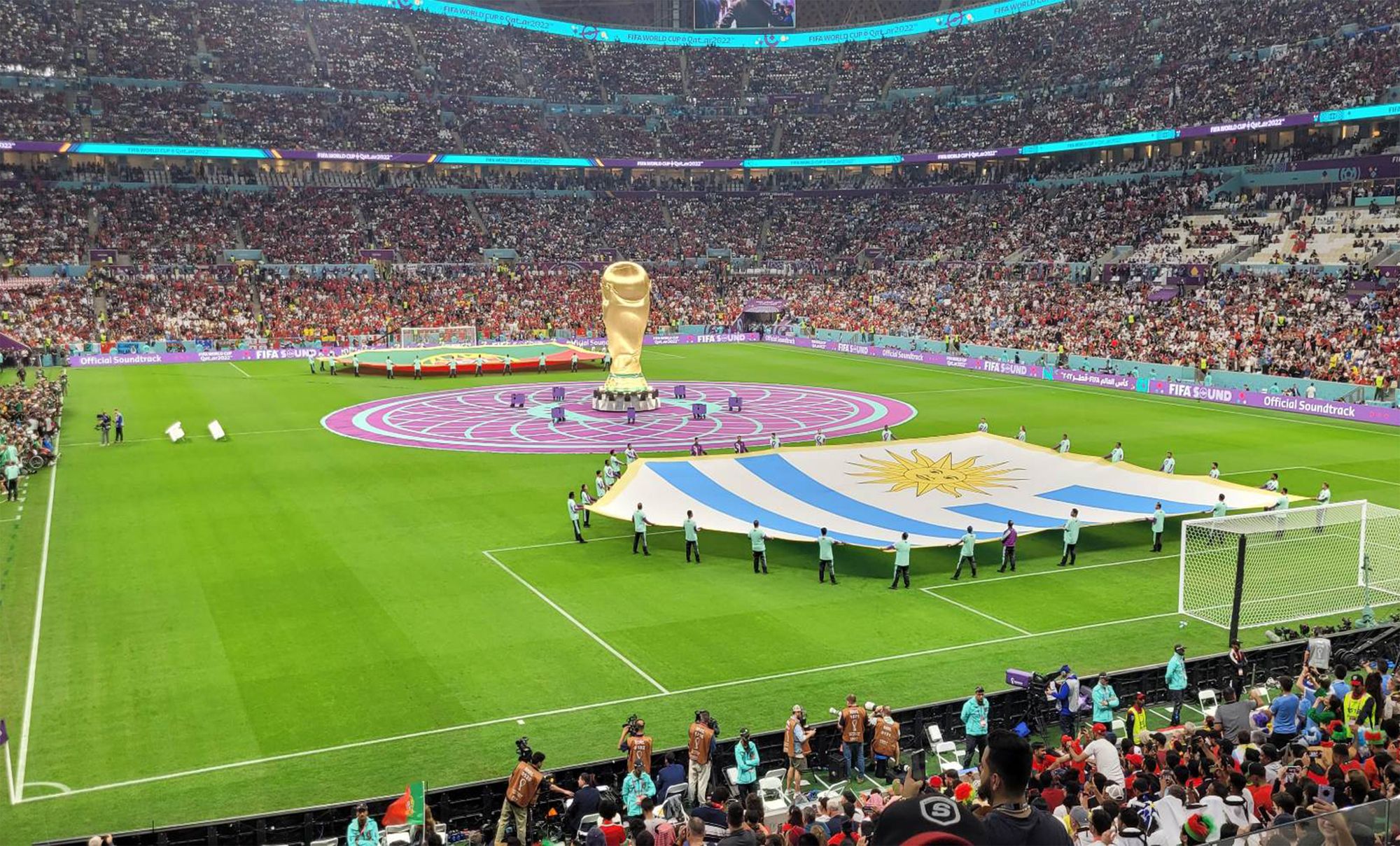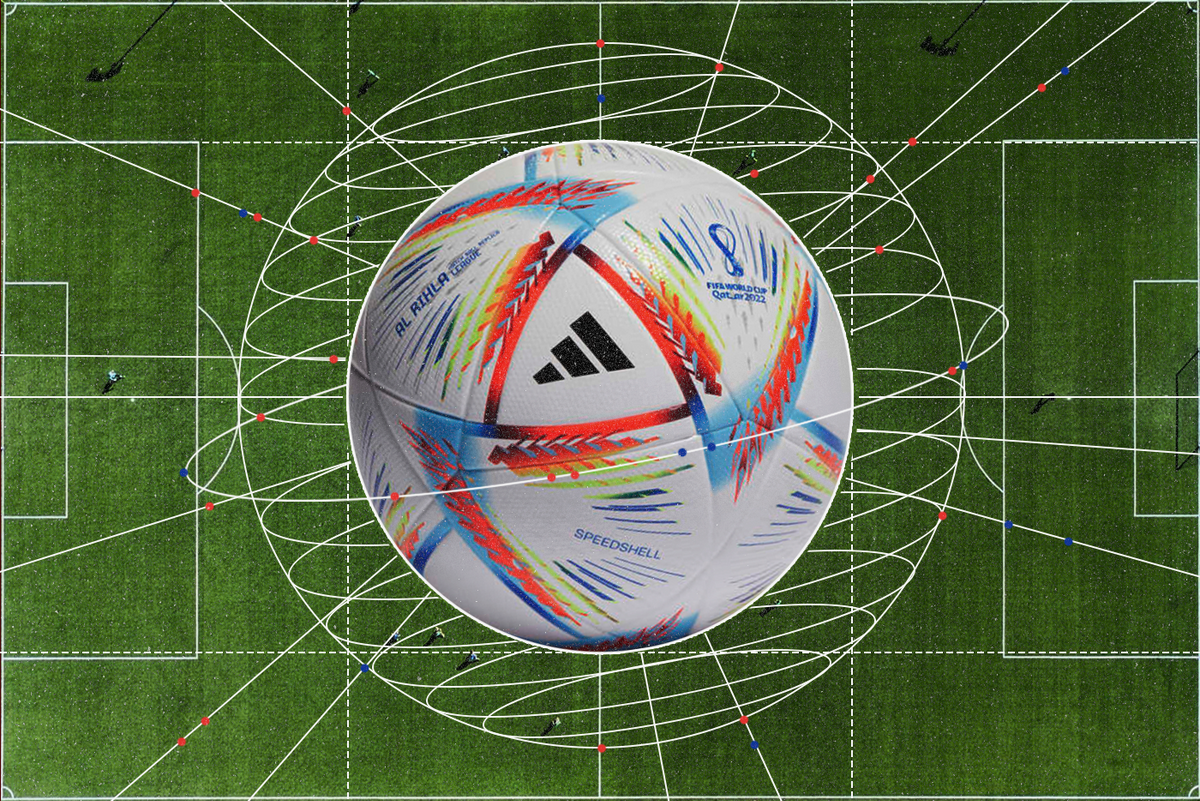How will the Al Rihla, with its tracking and data recording capabilities, change the modern game? By Ben Crawford.
With the FIFA Men’s World Cup behind us, we can reflect on the many things it gave to the world: excitement, drama and, on a progressive note, the Al Rihla ball. This project combined the minds of both Kinexon, a provider of intelligent sporting technologies, and Adidas, the company responsible for manufacturing footballs for the Men’s World Cup since 1970. This pioneering product was six years in the making.
Taking its name from the Arabic word for ‘the journey’, Al Rihla certainly went on a journey in its creation. Within this 450g thermally welded ball lies Adidas’ new ‘Suspension System’, allowing a motion sensor to track play at a rate of 500 cycles per second [1]. This 500 Hz inertial measurement unit can detect the slightest touches and relay this data back to match officials. Like modern smartphones, the ball is also rechargeable via induction, meaning that it can be charged simply by being placed on a wireless charging mat; the fully-charged sensors can run for 6 hours when actively used and up to three weeks when not. These additions to the product's interior were also designed to improve, not burden, player performance, which is a vital consideration given the possibility of technological interference in the game [1]. Now, when put into practice do they really work?
In the run-up to the World Cup, a study by John Eric Goff and PhD Students at the University of Lynchburg tested the Al Rihla against Adidas’ previous iterations [2]. Wind tunnel experiments were performed on the Al Rihla, alongside the last three World Cup balls, with aerodynamic data extracted from the wind tunnel, allowing the team to create simulations for how the trajectory of each ball would look when kicked. They demonstrated that the Al Rihla could not only be kicked further, but also travel at higher speeds compared to its predecessors. The study showed that despite the intricate sensors and suspension system embedded within the Al Rihla, the most important element of a football, its performance, was uncompromised [2].
One of the key advantages of the ball’s new technology is that it caters to the statistic-centric nature of modern football. For example, the Al Rihla makes recording and analysis of shot speed data, passing statistics, and a particular player’s distance travelled per match significantly easier and accurate, producing stats compilations that the modern consumer appreciates. As such, it features an ultra wideband sensor (UWB) and inertial measurement unit (IMU) that enables the instant transmission of precise data, allowing both the movement of the ball to be tracked and calculated [3]. The data is then sent to a local positioning system (LPS), with antennas around the field to receive these signals to facilitate tracking. A gyroscope embedded within the ball also measures spin and rotation, allowing comparisons between different players’ styles to be made [3]. The accumulation of this data lets fans marvel at their favourite players’ feats while simultaneously allowing clubs to charter improvement and use data tactically. The possibilities the Al Rihla brings to the game are endless.
“With the development of the connected ball technology, Adidas made it possible that an additional important layer of information is available to the video match officials,” notes Johannes Holzmüller, the director of football technology & innovation at FIFA. “The data from the ball unlocks new insights for storytelling around the unique moments on the pitch” [4].
The motion-sensing technology was put to the test when Portugal played Uruguay in the group stages back in late November. Cristiano Ronaldo, who has now returned to the Middle East with Saudi Arabia’s Al Nassr, was stripped of a goal by the Al Rihla’s sensors. In the 54th minute, his ex-Manchester United teammate, Bruno Fernandes, drove in a cross that seemed to glance off the head of Portugal’s all-time top goal scorer and into the back of the net. His celebrations seemingly confirmed this, however, data from the match ball was relayed back to officials, who quickly confirmed that Ronaldo, in fact, did not even touch the ball and that the goal be credited to his team mate Bruno [5].

This case is an example of how Al Rihla may change the very institutions involved in football decision-making. In English football, the “Dubious Goals Committee”, which meets on an ad hoc basis to confirm or deny a goal for a specific player, is often viewed flippantly. The concept itself may seem frivolous, yet in an evolving game where statistics are as vital as results, the committee’s job has become increasingly important. This committee is tasked with the accreditation of any disputed goal in the English football leagues. However, with FIFA and Adidas hoping to introduce Al Rihla’s technology into global football leagues, such a committee may become obsolete.
As the role of statistical data in modern football becomes more significant, the Al Rihla football may just be the gateway to a rise in new revolutionary technology that will soon allow every aspect of the game to be monitored and recorded with utmost accuracy.
References
[1] Adidas reveals the first FIFA World Cup™ official match ball featuring Connected Ball Technology [Internet]. adidas News Site | Press Resources for all Brands, Sports and Innovations. Adidas; 2022 [cited 2023 Jan18].
[2] Goff JE, Hong S, Asai T. Aerodynamic comparisons between Al Rihla and recent World Cup Soccer Balls. Proceedings of the Institution of Mechanical Engineers, Part P: Journal of Sports Engineering and Technology. 2022;
[3] Semi-automated offside technology to be used at FIFA World Cup 2022™ [Internet]. FIFA. FIFA; 2022 [cited 2023 Jan18].
[4] Introducing 'al hilm', the official match ball of the FIFA World Cup Qatar 2022™ finals [Internet]. FIFA. 2022 [cited 2023 Jan18].
[5] Cristiano Ronaldo: Adidas Technology proves Portugal captain did not score opener against Uruguay at World Cup [Internet]. Sky Sports. Sky Sports; 2022 [cited 2023 Jan18].





